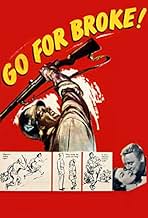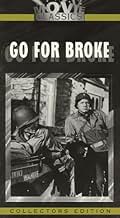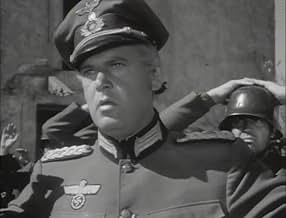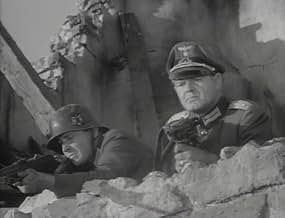Füge eine Handlung in deiner Sprache hinzuThe story of Japanese-American soldiers who fought in Europe during World War II.The story of Japanese-American soldiers who fought in Europe during World War II.The story of Japanese-American soldiers who fought in Europe during World War II.
- Für 1 Oscar nominiert
- 1 Gewinn & 1 Nominierung insgesamt
- Rosina
- (as Gianna Canale)
- Soldier
- (Nicht genannt)
- Lieutenant
- (Nicht genannt)
- Masami's Buddy
- (Nicht genannt)
- Mail Clerk
- (Nicht genannt)
- German Officer
- (Nicht genannt)
- Chaplain
- (Nicht genannt)
Empfohlene Bewertungen
Van Johnson harbors prejudice as he chosen to shape these recruits up. While he runs into difficulty with top brass, he does his job well.
He comes to understand and appreciate his men. When he meets up with his old Texas regiment, he fights someone for passing an anti-Japanese remark.
The Japanese players do a good job of showing that their true spirits were with the U.S.
A totally satisfying film depicting the human spirit.
After training the 442nd was assigned to Italy after the Salerno landings, took part in the campaign for Rome, and then was part of the invasion force into Southern France that occurred in August of 1944.
Johnson delivers a fine performance of an officer who is reluctant to soldier and train with this new outfit. His prejudices, honed to a fine edge by Pearl Harbor, weren't exactly atypical of a lot of Americans back then. Over time, he grows to appreciate his troops as men and as fighters.
Having all of those Nisei veterans lends a real ring of authenticity to this film. A few non-veterans were in this as well. Henry Nakamura played Tommy who adopted a pet pig in Italy and bought him to France and he was the comic relief. He made quite a hit and then was in the Robert Taylor western, Westward the Women. I guess he had limited typecasting potential because he disappeared after that.
This is a story of World War II that bears constant retelling and MGM made a fine film to do it with.
While this is not the most exciting war movie ever made, it is certainly worth adding to a collection, especially since it can be bought in a 2-VHS set with "Gung Ho." Of special note is the scene where two German soldiers are trying to make heads-or-tails of of the Japanese chatter on field phone lines they are tapping.
One of my grandfather's brothers was in the 442nd himself, and can still recall tales of basic training and serving in Italy.
I am bothered, however, by the fact that the cover on the video box does not show a single Japanese-American face, and the description does not really explain the historical significance of the events portrayed.
Hey Ted Turner, get your guys together and rectify this problem!
Dwight Sora
Wusstest du schon
- WissenswertesSeveral of the main characters were played by actual members of the 442nd Regimental Combat Team depicted in the film. The men saw action with the outfit in Italy and France.
- PatzerWhen Lt Grayson formally reports to his regimental commander at Camp Shelby, he performs a complete salute before the commander even begins his. Proper procedure would be for Grayson to bring his salute up, wait for his commander to complete a full salute, then return his arm to his side.
- Zitate
[first title card]
Title Card: "The proposal of the War Department to organize a combat team consisting of loyal American citizens of Japanese descent has my full approval.
[second title card]
Title Card: The principle on which this country was founded and by which it has always been governed is that Americanism is a matter of the mind and heart; Americanism is not, and never was, a matter of race or ancestry."
Title Card: Franklin D. Roosevelt
[third title card]
Title Card: The 442nd Regimental Combat Team and the 100th Infantry Battalion were composed of American citizens of Japanese ancestry.
Title Card: * * *
Title Card: BATTLE RECORD:
Title Card: 7 Major Campaigns in Europe
Title Card: 9,486 Casualties
Title Card: 18,143 Individual Decorations
Title Card: 7 Presidential Unit Citations
[fourth title card]
Title Card: This picture tells part of their heroic story. It starts at Camp Shelby, Mississippi, in 1943...
- VerbindungenEdited into WW II Theater: Go For Broke (2022)
- SoundtracksThe Meaning of Love
Written by Robert Pirosh, Alberto Colombo and Ken K. Okamoto
Top-Auswahl
Details
Box Office
- Budget
- 1.337.000 $ (geschätzt)
- Laufzeit1 Stunde 32 Minuten
- Farbe
- Seitenverhältnis
- 1.37 : 1
Zu dieser Seite beitragen































